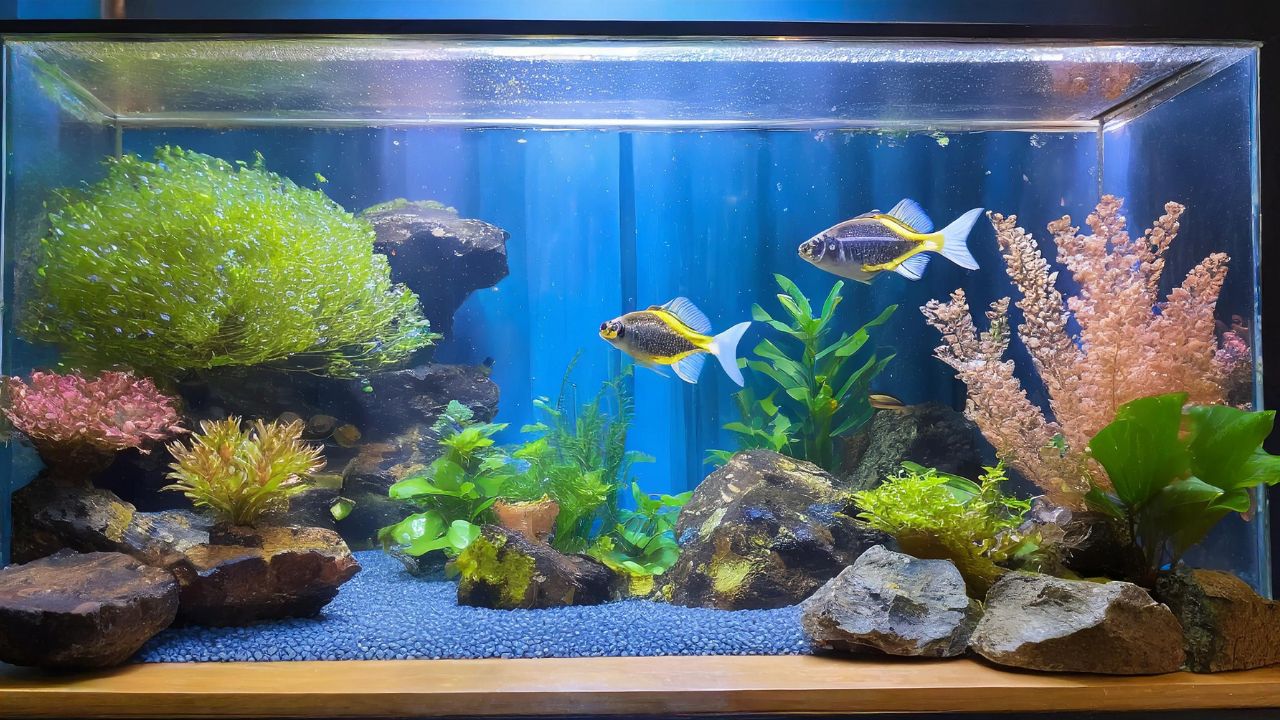Have you ever wondered, How long does it take for angelfish eggs to hatch? As a beginner in the world of angelfish breeding, understanding the process is essential. When conditions are right, angelfish will spawn by laying clusters of eggs on surfaces in the aquarium. This begins the angelfish breeding and egg hatching process.
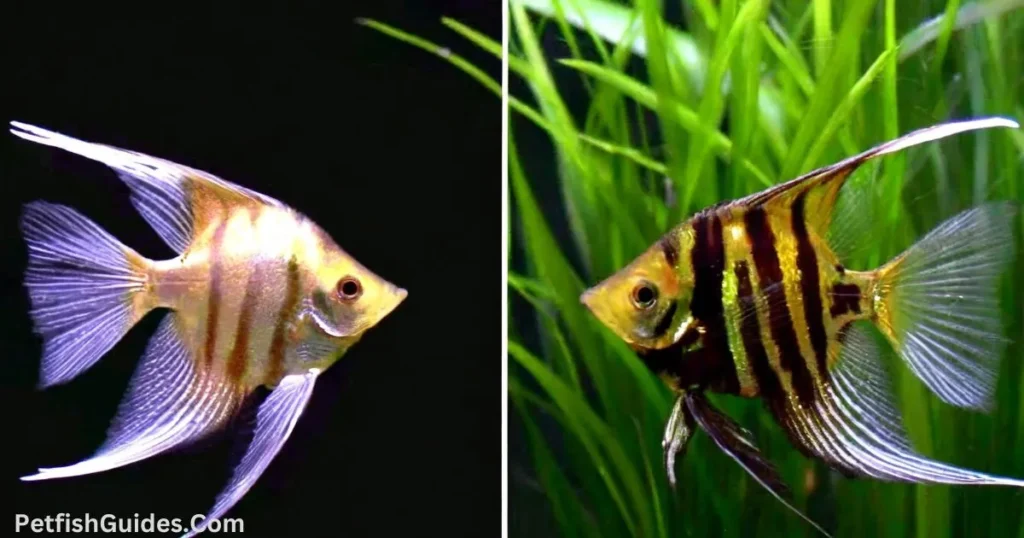
For first-time angelfish owners, seeing eggs in the tank can be surprising! While exciting, it’s normal to have questions about what happens next. Specifically, how long will it take for the angelfish eggs to hatch?
How Long For Angelfish Eggs to Hatch?
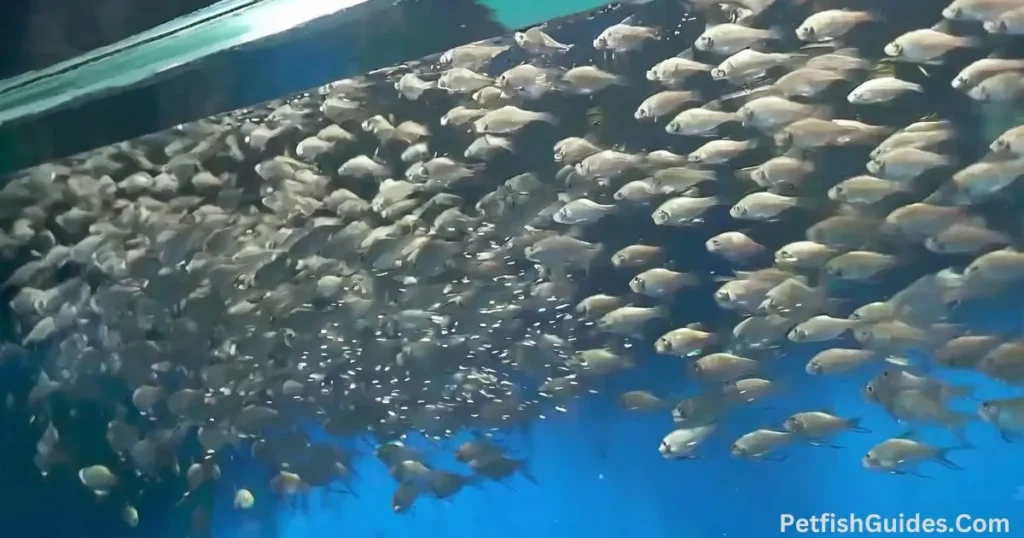
The total hatching time frame can vary based on tank conditions. But generally, angelfish eggs will hatch 3 to 5 days after spawning. The eggs will hatch over a period of several hours, not all at once. Newly hatched angelfish fry will hang vertically from the surface for 12-24 hours while their swim bladders inflate. After absorbing their egg yolks, the free-swimming fry will leave the hatching site.
Angelfish Eggs: What To Look For ?
Once a pair of angelfish spawns, the female will deposit hundreds of tiny eggs on the surface of leaves, decorations, or aquarium glass. The eggs will look small and round, ranging in color from clear to amber. During spawning, the male angelfish will follow behind the female and fertilize the eggs. If the eggs have been fertilized, they will stay attached to the surface. Unfertilized eggs will turn white and fungus over.
The Angelfish Eggs Stages.
The breeding process of an angelfish will go through four major stages as follows:
Spawning – The Beginning of Life:
Spawning is the process where angelfish lay their eggs, and it is the vital first step towards hatching. To initiate spawning, a pair of mature and sexually active angelfish will usually prepare a flat surface, such as a broad leaf or the side of the aquarium, where they will lay their eggs. These eggs are adhesive and transparent, making them easily visible to the naked eye.During this stage, eggs are fragile and prone to fungus or parasites. Careful monitoring and fungus medication can help protect the eggs. The morula stage lasts around 2 days.
Fertilization – The Miracle of Life:
Once the female angelfish has laid her eggs, the male angelfish will follow closely behind, fertilizing them externally. This external fertilization is a fascinating natural phenomenon that ensures the survival and development of the angelfish embryos. The fertilized eggs will stick to the chosen surface, forming a cluster or “spawn.”
Incubation – A Delicate Process:
The incubation period is crucial for the development of the angelfish embryos. During this stage, eggs are fragile and prone to fungus or parasites. Careful monitoring and fungus medication can help protect the eggs. In this period, the parents play a significant role in protecting the eggs. They fan the eggs with their fins, providing them with oxygen and preventing the growth of harmful bacteria.
The incubation duration can vary based on various factors such as water temperature, genetics, and overall health of the angelfish. On average, it takes approximately 36 to 48 hours for angelfish eggs to hatch. However, it is essential to note that this time frame can vary significantly. Factors like the breeding pair’s age, water conditions, and genetic factors can all influence the duration of the incubation period.
Hatching – Welcoming New Life:
Once the incubation period is complete, the angelfish eggs will undergo a remarkable transformation as they prepare to hatch. You may notice the tiny embryos wriggling inside the eggs, indicating that hatching is imminent. This stage is an exciting time for any angelfish breeder, as it marks the culmination of their efforts.
The hatching process itself can take several hours to complete. The freshly hatched angelfish, also known as fry, emerge from their eggshells and swim freely within the tank. It is crucial to provide adequate space and suitable housing for the fry during this phase so that they can navigate their new environment safely.
Caring for Angelfish Eggs During Incubation.
Proper care during the incubation period is vital for the successful hatching of angelfish eggs. Here are some key steps to follow to ensure the best possible conditions for the eggs:
1. Temperature Regulation: Maintain a stable water temperature of 80-84°F (27-29°C) throughout the incubation period. Use a reliable aquarium heater and a thermometer to monitor the temperature regularly. Sudden fluctuations in temperature can negatively impact the eggs’ development.
2. Water Quality Management: Keep the water clean and free from contaminants. Perform regular water changes, ensuring the replacement water is properly conditioned and has the same temperature as the existing tank water. Use a reliable water testing kit to monitor ammonia, nitrite, and nitrate levels, as high levels can be harmful to the eggs.
3. Protection from Light: Angelfish eggs are sensitive to light, and exposure to excessive light can hinder their development. Keep the tank in a dimly lit area or use a light shield to prevent direct light from reaching the eggs. This will create a more natural environment and promote healthy growth.
4. Proper Nutrition for Parent Angelfish: Providing a balanced diet to the parent angelfish is essential during the incubation period. A varied diet consisting of high-quality flake food, frozen or live brine shrimp, and other small insects will ensure the parent angelfish are in optimal health to care for the eggs.
With these care guidelines in place, you can maximize the chances of successful hatching and healthy fry.
Factors Affecting the Hatching Time.
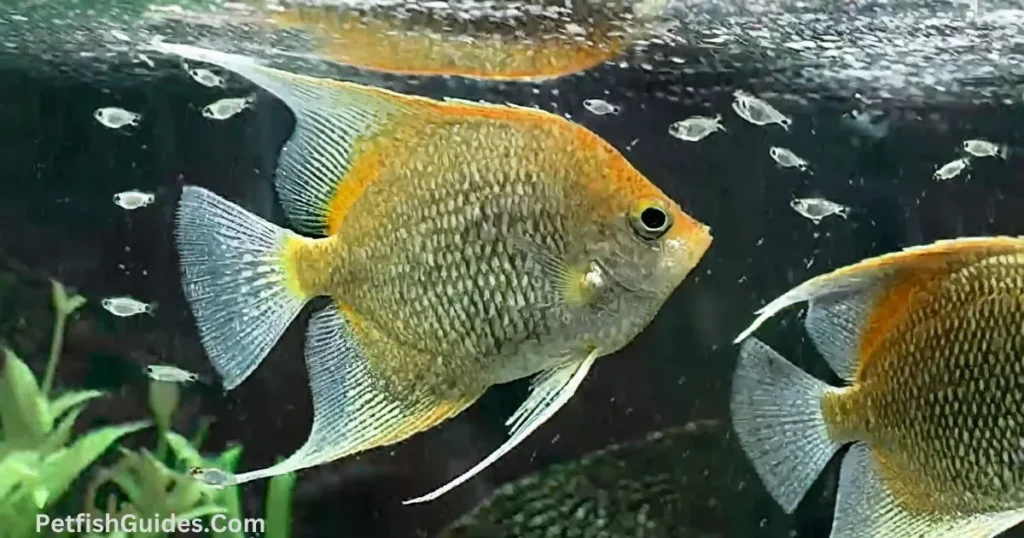
Water Temperature –
The water temperature plays a crucial role in the development and hatching of angelfish eggs. Generally, angelfish eggs tend to hatch faster in warmer water compared to colder temperatures. Ideally, maintaining a water temperature around 78 to 82 degrees Fahrenheit (25 to 28 degrees Celsius) is recommended for optimal hatching.
It is essential to note that extreme fluctuations in water temperature can be detrimental to the eggs and lead to delayed hatching or even egg mortality. Therefore, investing in a reliable aquarium heater and regularly monitoring the water temperature will ensure the best conditions for hatching.
Genetics –
Genetics also play a significant role in determining the hatching time of angelfish eggs. Different angelfish strains or species may exhibit variances in their breeding behavior and development periods. Some strains may have a genetic predisposition to hatch earlier, while others may take longer.
If you are considering breeding angelfish, it can be beneficial to research the specific genetic traits and characteristics of the strain you plan to breed. This knowledge will provide insight into the expected hatching time and enable you to make informed decisions as a responsible breeder.
Water Quality –
Maintaining optimal water quality is crucial for the successful hatching of angelfish eggs. Poor water conditions can lead to delayed hatching, increased egg mortality, or stunted fry growth. Proper filtration, regular water changes, and monitoring of essential water parameters such as pH and ammonia levels are essential for ensuring a healthy environment for both the eggs and the fry.
Hatching Complications and How to Address Them
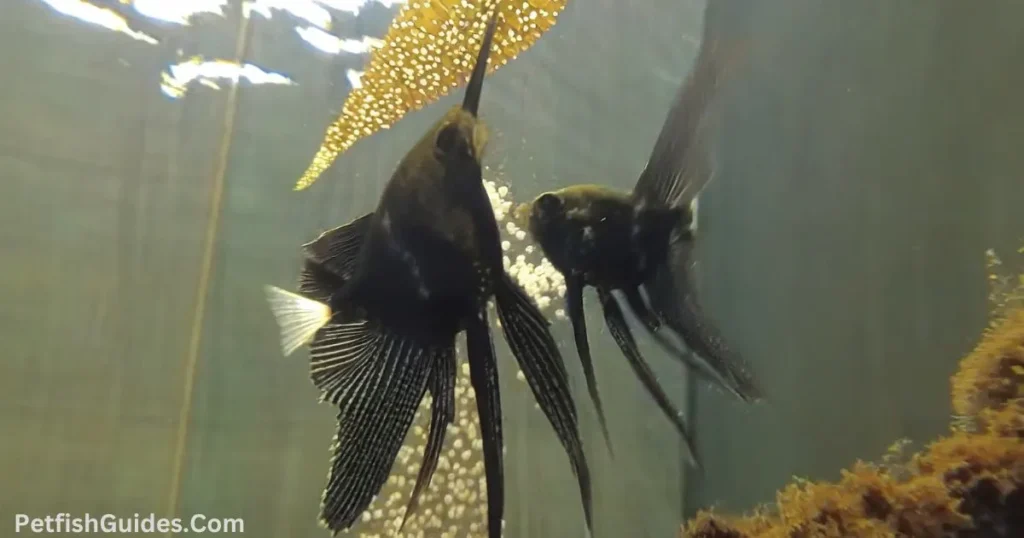
While angelfish eggs generally hatch without major complications, there are instances where issues may arise. Here are some common hatching complications and how to address them:
1. Infertile Eggs: If some of the eggs fail to hatch, they may be infertile. Infertile eggs will typically turn white or fungus-covered. Remove these eggs from the tank to prevent contamination and potential harm to the developing fry.
2. Fungal Growth: Fungal growth on the eggs can be a common issue during the incubation period. A small amount of fungus is often harmless, but if it spreads rapidly, it can suffocate the eggs. Add aquarium salt. Salt helps fight fungal infections on eggs. Follow product instructions and only use aquarium salt, not table salt. Gently remove any visible fungus using a clean tool or turkey baster. You can also use antifungal treatments specifically designed for aquarium use.
3. Stuck Fry: Occasionally, some fry may become stuck to the egg membrane, unable to free themselves. If you notice this, you can carefully assist the fry by gently peeling away the egg membrane. Be extremely cautious not to damage the fry during this process.
By addressing these complications promptly, you can increase the chances of a successful hatching and healthy fry.
Tips for Successful Angelfish Breeding.
Breeding angelfish can be a rewarding experience. To increase your chances of success, consider the following tips:
1.Selecting Compatible Pairs: Choose healthy adult angelfish that show signs of compatibility. Look for pairs that engage in courtship behaviors and exhibit similar body size and shape.
2.Conditioning the Breeders: Before breeding, ensure that the parent angelfish are in optimal health and well-fed. Provide them with a varied diet consisting of high-quality foods to enhance their fertility.
3.Proper Tank Size: Provide a spacious tank with plenty of hiding spots and vegetation for the breeding pair. This will create a suitable environment for courtship and egg laying.
4.Monitoring Water Parameters: Regularly test the water parameters and maintain stable conditions. Ammonia, nitrite, and nitrate levels should be kept at safe levels to avoid stress or harm to the angelfish.
5.Patience and Observation: Breeding angelfish requires patience and careful observation. Take the time to observe the behavior of the breeding pair and the development of the eggs to ensure a successful outcome.
Raising the Angelfish Fry After Hatching
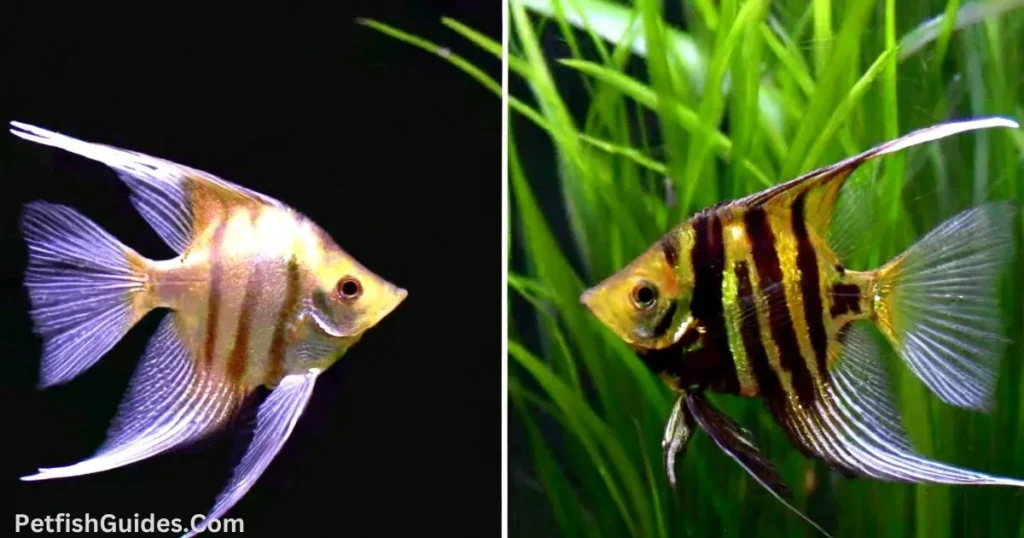
Once the fry have absorbed their yolk sacs and become free-swimming, it’s time to provide them with proper care and nutrition. Here are some tips for raising the angelfish fry:
1. Suitable Tank Setup: Transfer the fry to a separate rearing tank with appropriate water parameters. Use a sponge filter or a gentle air-driven filter to prevent the fry from getting sucked in.
2. Feeding Schedule: Feed the fry small, nutritious meals multiple times a day. Start with powdered or liquid fry food and gradually introduce live or frozen baby brine shrimp or micro worms as they grow.
3. Water Quality Maintenance: Monitor the water quality closely and perform regular water changes to keep ammonia and nitrite levels at zero. Use a turkey baster or siphon to remove any excess food or waste from the bottom of the tank.
4. Growth and Development: As the fry grow, you may notice changes in their appearance and behavior. Provide them with a varied diet to support their development, and observe their interactions to ensure they are healthy and thriving.
Do Angelfish Eggs Change Colors?
Yes Angelfish eggs can change its color to white amber, or even brownish. The main causes could be follows:
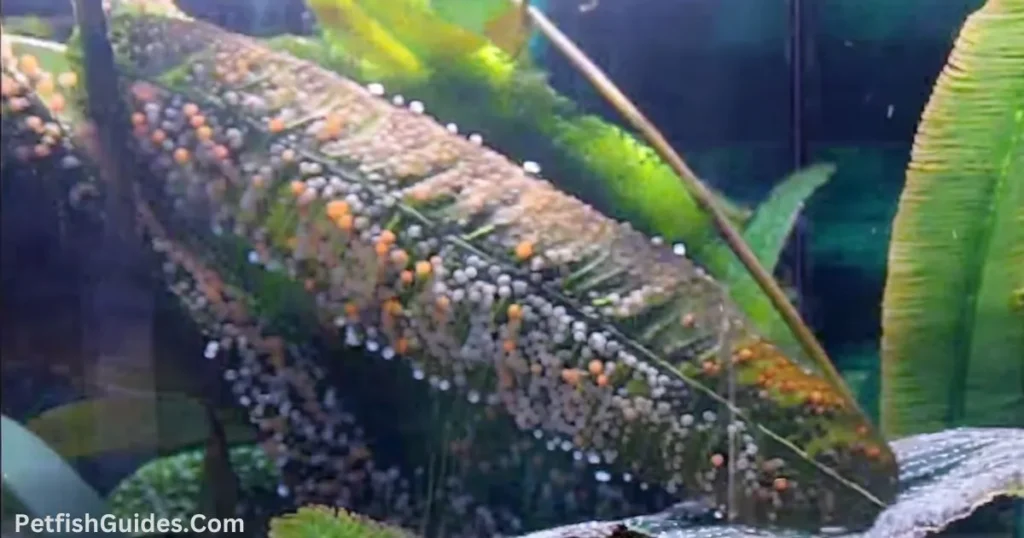
Absence Of Male Fish In A Tank
Sometimes it is difficult to differentiate between male and female fish, So we put Two female angelfish in one tank. In this case if a female laid the eggs but there is no male fish to fertilize them then the eggs will turn WHITE and die.
Infertility of Male Fish
If the male fish in the tank is infertile then it won’t fertilize the eggs laid by the female. This leads to death or damage of the eggs. And it could be a reason for change in color.
Fungal Infections
Fungal infections are also a primary reason. So you have to keep a close eye on this. Also keeping the eggs out of the water for a long time can leads to death and change of color of the eggs.
FAQs
How do I know if angelfish eggs are fertile?
Fertile angelfish eggs will appear opaque and amber in color. They will stay attached to surfaces. Unfertile eggs turn white or transparent. Fungused eggs also turn white.
What temperature do angelfish eggs need?
Ideally, keep the tank water temperature between 80-84°F while angelfish eggs are incubating. Warmer temperatures speed up hatching time. Cooler water below 75°F can prevent eggs from developing properly.
Can angelfish eggs hatch in the filter?
Yes, it’s common for angelfish to spawn on filter intakes. Try covering intakes with sponge material before spawning. Then the eggs are protected while incubating.
Do angelfish eat their eggs or babies?
Angelfish parents may eat eggs that get fungused or fail to hatch. Once free-swimming, fry may also get eaten if not separated into a rearing tank. This is natural fish behavior.
What Does It Mean When Angelfish Eggs Turn White?
The main reason angelfish eggs appears white is due to fungal infection. It is highly contagious, so you need to take quick actions to prevent.
How can I raise newly hatched angelfish?
Provide plenty of infusoria and newly hatched brine shrimp for starter foods. Maintain clean, still water between 80-82°F for optimal growth. Transfer fry to a grow-out tank as they get larger.
How Often Do Angelfish Lay Eggs?
A female angelfish can lay eggs in every 2-3 weeks. But, the frequency depends on the tank’s age, size, and water parameters.
How Many Eggs Do Angelfish Lay at A Time?
A female angelfish can lay between 100-1000 eggs at a time. This may vary depending on the age, size, and breeding conditions of the fish.
What Is The Lifespan Of Angelfish?
Final Words
From courtship to spawn, raising angelfish offspring is an amazing experience. Now that you know what to expect in the angelfish egg hatching process, you can feel prepared for breeding success! Remember, each angelfish breeding pair is unique, and their eggs may hatch at slightly different times. By providing optimal conditions, such as maintaining the right water temperature, ensuring good water quality, and understanding the genetic factors, you can increase your chances of a successful hatching and Enjoy watching your angelfish family grow.

